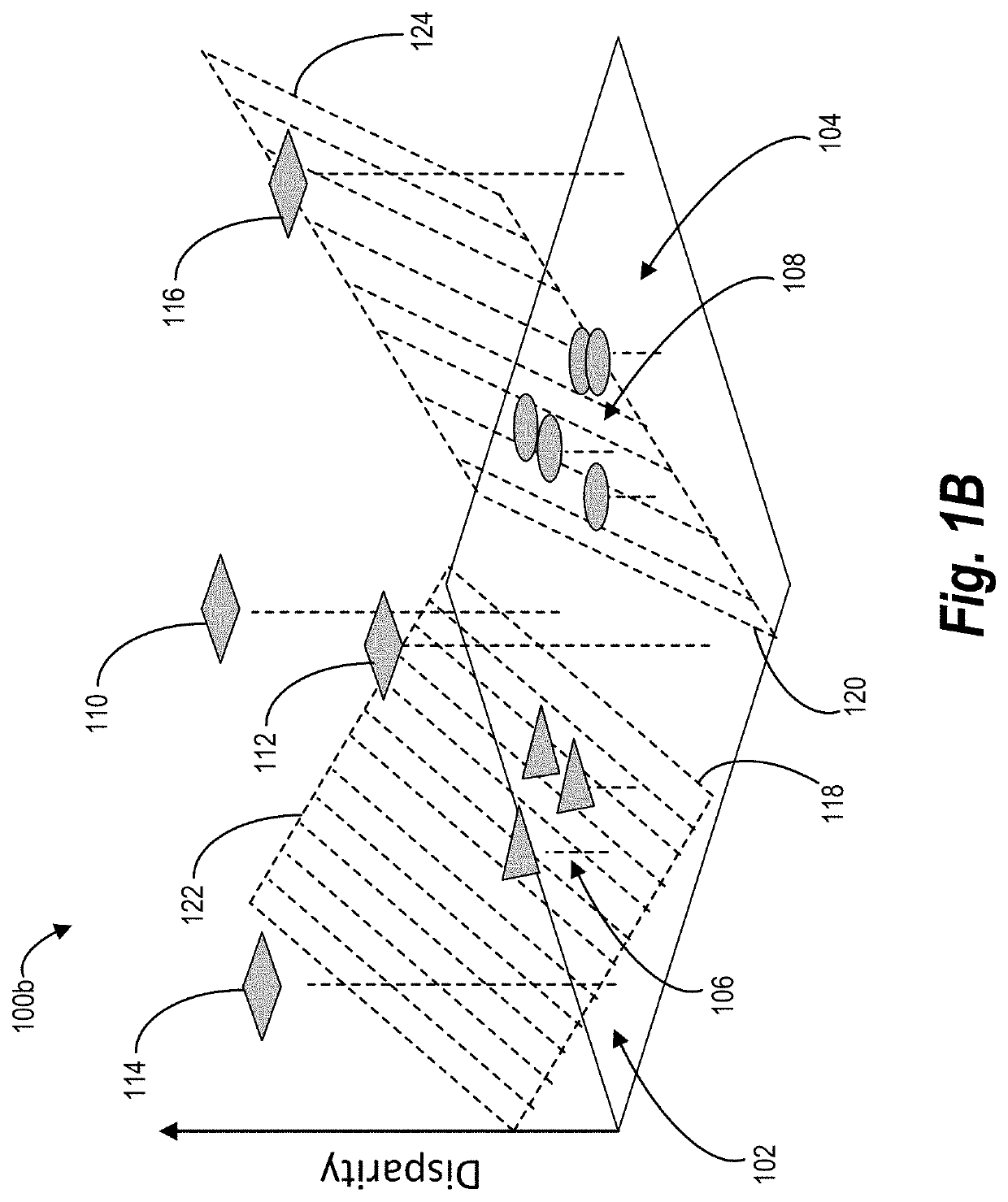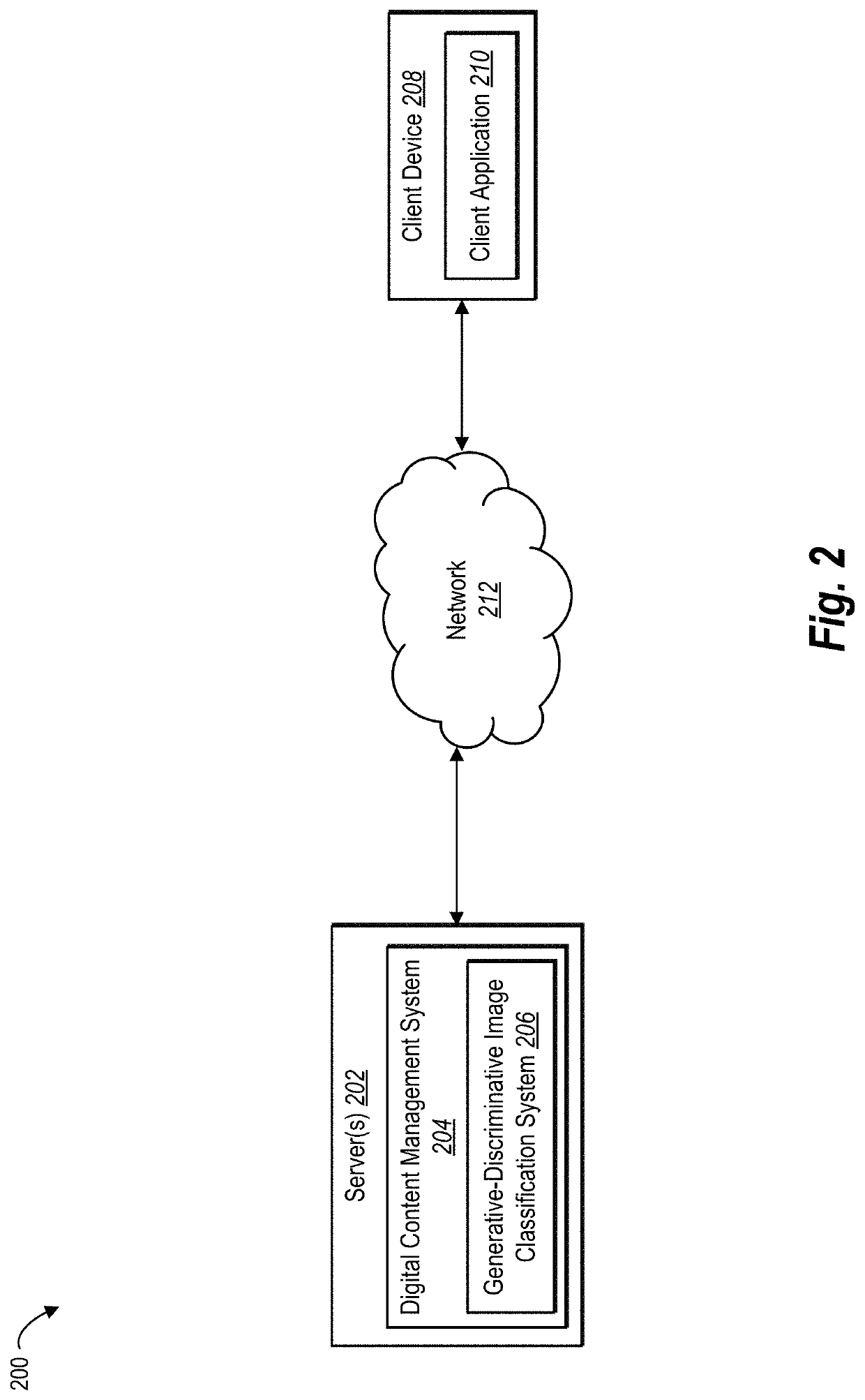Classifying images utilizing generative-discriminative feature representations
a technology of feature representation and classification image, applied in the field of classification image utilizing generative-discriminative feature representation, can solve the problems of conventional computer vision system suffering, misclassification errors, misclassification of open-set objects, etc., and achieve the effects of accurate detection of open-set objects, accurate classification accuracy, and accurate distinction of features
- Summary
- Abstract
- Description
- Claims
- Application Information
AI Technical Summary
Benefits of technology
Problems solved by technology
Method used
Image
Examples
Embodiment Construction
[0020]One or more embodiments described herein include a generative-discriminative image-classification system that disentangles open-set images that produce high class-activations from known set images to increase classification accuracy. More specifically, one or more embodiments of the generative-discriminative image-classification system utilize one or more of a generative technique and a self-supervision technique to learn discriminative features for classification that force class activations to be low for open-set images. Thus, one or more embodiments increase the accuracy of both open-set detection and known class detection.
[0021]In particular, with regard to the generative technique, one or more embodiments use a generative model to generate an image reconstruction of an input image. In one or more embodiments, the generative model is trained to reconstruct images of known classes and not open-set images. As such, the generative model generates more accurate reconstructions...
PUM
 Login to View More
Login to View More Abstract
Description
Claims
Application Information
 Login to View More
Login to View More - R&D
- Intellectual Property
- Life Sciences
- Materials
- Tech Scout
- Unparalleled Data Quality
- Higher Quality Content
- 60% Fewer Hallucinations
Browse by: Latest US Patents, China's latest patents, Technical Efficacy Thesaurus, Application Domain, Technology Topic, Popular Technical Reports.
© 2025 PatSnap. All rights reserved.Legal|Privacy policy|Modern Slavery Act Transparency Statement|Sitemap|About US| Contact US: help@patsnap.com



